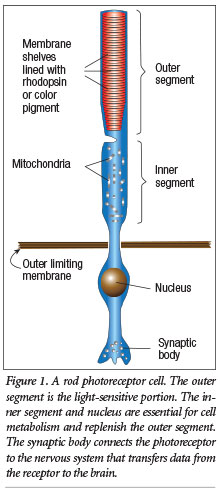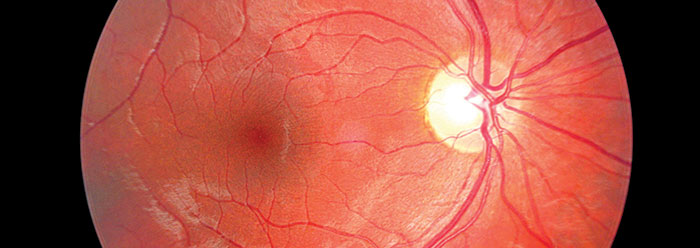Suppose you are an electronic engineer tasked with devising a mechanism that can translate ordinary variations of light into useful information. But here is the tricky part: It has to work inside a living person. Your engineering instincts instantly recognize the mechanism will require multiple parts—primarily a light detector and a data-processing center—working together for a single purpose.
You recall people have been sending messages to each other for centuries simply by flashing a light in a coded sequence. The people who send and receive these flashing messages must know “the code” in advance. However, light is simply a condition of nature—it is either present or it is not. It does not convey information or send instructions to organisms in and of itself. Processing data into useful information happens within the neurological center of an organism. Fortunately, the required data-processing element of the mechanism is already built into the person’s brain, saving you decades of work. All you have to do is devise a sensor to detect light and send that data to the brain. So, how would you begin your task?
That was the engineering undertaking of the Lord Jesus when He designed the light detectors, called photoreceptors, that He placed in the retina of our eyes (and the eyes of all other light-sensing organisms). We needed something that could act as an interface between the physical conditions around us and our internal realm of thought and consciousness. Our Lord’s ingenious solution was to use a molecule that could change shape when exposed to a single photon of light—the smallest unit of light there is!

In high school biology, students learn about the two types of photoreceptor cells called rods and cones. Rods enable us to see in darker conditions and cones give us both color vision and fine visual acuity. Only cones abide in the part of the retina where incoming images are precisely focused, and they are responsible for high-resolution vision. Humans have over 250 million photoreceptors, with about 120 million rods and six million cones in each eye.
Even with myriads of photoreceptors covered by tens of thousands of light-sensitive molecules called rhodopsin, a photon of light is very tiny and may pass between the rhodopsin molecules without actually hitting any of them. From an engineer’s perspective, one effective way to ensure that a photon will strike a molecule is to embed thousands of molecules randomly along a flat membrane and then stack many membranes on top of each other facing the direction of incoming light. This strategy covers the area occupied by any photoreceptor with rhodopsin molecules and is precisely how your photoreceptor is designed, procuring any light available to enable your sight (see the outer segment in Figure 1).
Designed rhodopsinin reveal clever design by being sensitive to both the presence of light and its different characteristics for exhibiting colors. The rhodopsin molecule has two main elements, a specific chemical form of vitamin A and its attached protein called an opsin. The selection of the vitamin A aldehyde was a perfect choice since it can change shape when exposed to light. The different colors one sees in a rainbow correspond to the different frequencies of light energy that, taken together, make white light. Remarkably, various opsins are “tuned” to different frequencies of light, so any individual opsin may confer the ability to see a limited range of color—such as reds, greens, or blues. More than 300 different opsins have been identified, serving as an essential molecule for sight in a variety of creatures.
The Lord Jesus designed an ingenious biochemical process enabling photoreceptors to generate the visual data that are sent to the brain. When the photoreceptors are not exposed to light, enzymes dedicated to working on the vitamin A aldehyde impart energy into it by bending it from its normally straight shape and then attaching it to an opsin molecule. In this state, rhodopsin is primed for activation by a single photon of light. When light strikes rhodopsin, the energy in the vitamin A aldehyde is released, and it snaps back to its straight shape and detaches from the opsin. The cascading effect results in a small change in voltage across the membrane of the photoreceptor and the release of a neurotransmitter (see Figure 2). This sends what amounts to one bit of recognizable data to the brain.
Photoreceptors are constantly sending billions of data bits to the brain, which processes the data and then associates it with catalogued memories. When organized matches are made, a person instantly realizes the perception of vision in the form of useful information. Both of these precisely designed features—an effective light detection system and the data-processing capability of the brain—are needed for sight to occur.
Human engineers find solutions to problems via the design process using engineering principles. The incredible engineering genius of the Lord Jesus Christ is clearly seen in the things He made as they reflect the same principles…only at a scale and level of complexity our best human engineers today can only dream of.
* Dr. Guliuzza is ICR’s National Representative.















